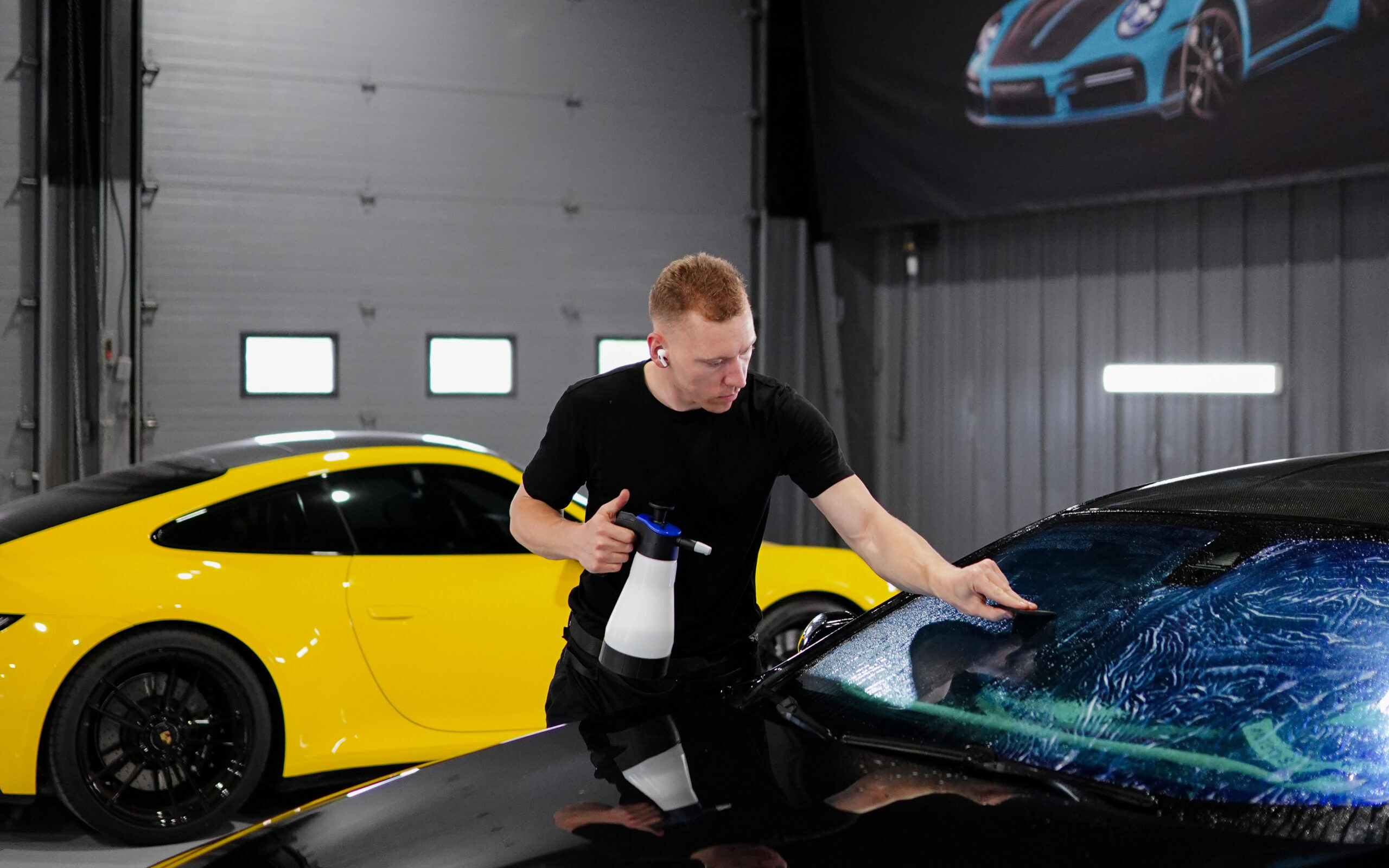WHAT YOU SHOULD KNOW BEFORE TINTING YOUR CAR WINDOWS
Contrary to popular belief, window tinting isn’t only for privacy purposes – it actually protects passengers inside the vehicle from the sun’s harmful UV rays. Plus, blacked-out windows give your car a sleek look, showing off your distinct style. But before you get your car’s windows tinted, here are some things you need to consider:
UNDERSTANDING WINDOW TINT PERCENTAGES
Window tint is measured in visible light transmission (VLT) percentage. So, if a window has a 20% tint, it means that only 20% of light can pass through the film into the car, while 100% tint means that all the light can pass through the film. In other words, the lower the percentage, the darker the tint.
For example, a 5% tint would be extremely dark, as it allows almost no light to pass through. This offers excellent privacy and protection against UV rays. However, with a dark tint, you are sacrificing visibility – the key reason why local laws exist for window tinting. But while opting for an 80% tint will allow for better visibility, you will lose a significant amount of UV protection and privacy. Thus, the ideal percentage falls somewhere in the middle.
CHOOSING THE IDEAL TINT PERCENTAGE
The best window tint percentage is the one that doesn’t hinder your vision, yet provides adequate protection against UV rays. Thus, a 35% tint is a popular choice for car window tinting, as it meets all of these requirements. It is the perfect balance between privacy, protection, and visibility. If you are not a fan of dark windows, you can still get similar results with a 50% tint.
WINDOW TINTS OF 50% OR MORE
At a 50% tint, you will have clear visibility all around you. But typically, a 50% tint is the highest tint recommended, as anything above that will result in a significant loss in UV protection.
A lot of car owners opt for a tint option between 60% and 80%. But honestly, you get almost no protection with this, and it is better not to get a tint if you intend to go this high in percentage.
WINDOW TINTS BELOW 30%
Anything below 30% is jet black, which means hardly anyone can see inside your vehicle. In addition to complete privacy, you also get better protection from the sun and reduced glare from external lights – not to mention the sleek look of a blacked-out car! Just note that anything below 30% will reduce visibility.
LAWS REGARDING VEHICLE WINDOW TINTING
Before you get your car’s windows tinted, be sure to check your local laws for regulations regarding window tinting to see if there are specific window tinting requirements or restrictions.
Distracted driving is one of the major causes of accidents on the road. While your first thought of distracted driving might be cellphones, authorities cite tinted windows as one of the top distractions that cause accidents, because blacked-out windows can significantly limit your field of view of your surroundings. Thus, failure to comply with state or provincial laws regarding tinting can result in a ticket.
For example, in Ontario, Section 73.3 of the Ontario Highway Traffic Act, the law states the following:
“No person shall drive on a highway a motor vehicle on which the surface of the windshield or any window to the direct left or right of the driver’s seat has been coated with any colored spray or other colored or reflective material that substantially obscures the interior of the motor vehicle when viewed from outside the motor vehicle.”
Furthermore, according to a recent law, any vehicle manufactured after January 1st, 2017 must not have an aftermarket windshield tint. While OEM tints are allowed if the tint has 70% VLT or more, the tint area still cannot exceed a height of more than 75 mm from the top of the windshield. Thus, we do not recommend tinting the windshield at all.
As for the side windows at the front of the car, while there is no exact tint percentage specified, it is clear that the driver needs to be able to have an unobstructed view outside the windows, and that police officers need to have a clear view inside the vehicle. So, we recommend not going lower than a 70% tint in order to meet these requirements.
As for the rear passenger windows, there are no specifications and you are free to go as dark as you’d like.
Professional Window Tinting in the GTA
ID Protection offers the best professional window tinting services in Toronto, and ensures that your car’s tint meets current Ontario laws and regulations. We offer both a full window tint package, and a partial tint package, giving you full control over your window tinting preferences.
Contact ID Protection today to discuss your window tinting needs.
